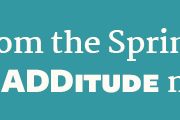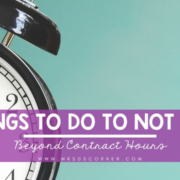“I ‘Eat the Frog’ on My To-Do List”
From sorting piles of mail to folding last week’s laundry, some lingering tasks require more time and motivation than our ADHD brains can reliably muster. Our to-do lists may never be fully liberated from these onerous tasks, but we can free ourselves from the negative self-talk and shame that result from our avoidance and procrastination.
ADDitude recently asked 389 readers how they move forward when faced with a list of tiresome projects, tasks, and chores. The majority (68%) said it depends on the day, the tasks, or their mood, while 25% said they pluck the “low-hanging fruit” and do the easiest items first. Only 7% said they “eat the frog,” tackling their hardest, most unpleasant tasks first.
Here, ADDitude readers share more real-world strategies for getting things done — and treating themselves with kindness when they don’t.
How do you manage shame when faced with unfinished responsibilities? Share your experience in the Comments section below.
Listen to Your Body
“I wait for the ‘brain goblin’ to unlock the door in my brain that allows me to do the task. I never know when he’ll decide to open the door, but I know I have to drop everything and do the task immediately when he does.” — Ashley, Ohio
“Tuning into my body helps me make wiser decisions about how to proceed with my daily to-dos. If I need to prioritize rest, I honor that feeling instead of beating myself up over it. I find that I am more productive afterward.” – Laurie, New York
[Get This Free Download: Stop Procrastinating… Now!]
“When I am particularly low energy or distractable, I try to ‘eat the frog.’ Otherwise, I won’t get it done. If I’m more energetic, I will often do the ‘low-hanging fruit’ to build momentum and capitalize on my hyperfocus.” – Anonymous
“I determine the most manageable task based on the day, my mood, and my dopamine stores. I also lie profusely to myself about what is actually achievable in a certain amount of time and get started.” – Kelsey, Pennsylvania
“It’s all about dopamine, reward, motivation, and stimulant meds. By starting with the most rewarding task, I enhance my adrenaline and dopamine inflow, which helps me accomplish more rewardless, necessary tasks.”— Anonymous
Reframe & Reward
“On difficult days, I create a ‘done’ list at the end of the day. It includes finished items that weren’t on my to-do list, so I don’t feel defeated by a lack of progress.” – Beth, New Hampshire
[Read: How to Get Things Done Without Getting Bogged Down]
“I find it motivating to have specific things to mark off. If I’m feeling robust, I start with the hardest things. Or I’ll work on my emails to warm up and then get down to business.” – Elisabeth, Indiana
“I decide on a reward for myself when finishing a task. For example, after I get X done, I can watch a movie or an episode of a T.V. show.” – Brittany, Texas
“On a bad day, I’ll add easier things to my to-do list to ‘feel’ productive. I can cross the easy things off first, which motivates me to tackle harder tasks.” – Monica, Ohio
“I remind myself to do just one thing on my to-do list. This way, I can get 10 things done in 10 days rather than 0 in 10 days. Realistically, I won’t accomplish 10 things in 10 days, but thinking like this makes tasks feel more doable, and I will get more done.” – Tara, Minnesota
Eat the Frog: Next Steps
- Free Download: Better Time Management with Adult ADHD
- Self-Test: Quiz: How Seriously Do You Procrastinate?
- Read: Get the Most Out of Your To-Do List
SUPPORT ADDITUDE
Thank you for reading ADDitude. To support our mission of providing ADHD education and support, please consider subscribing. Your readership and support help make our content and outreach possible. Thank you.






